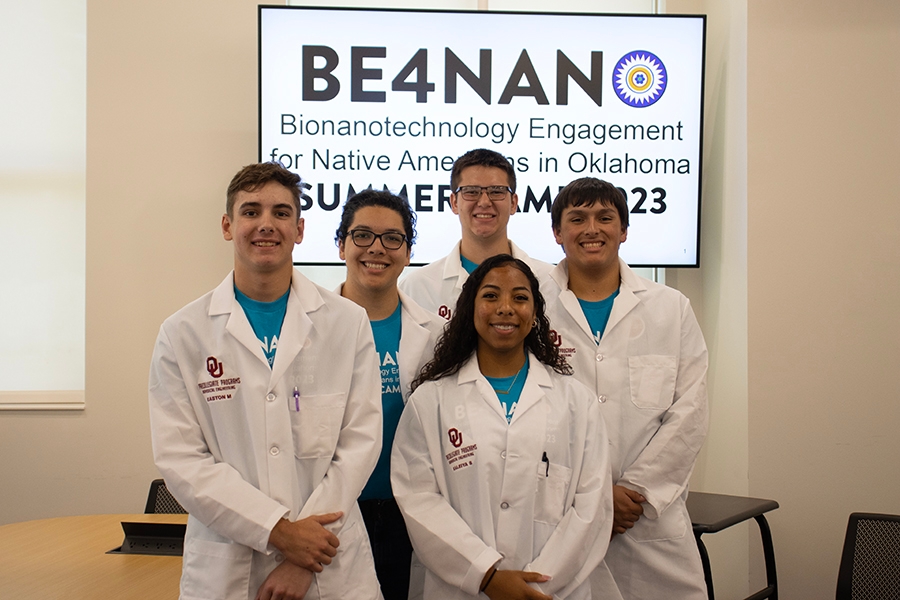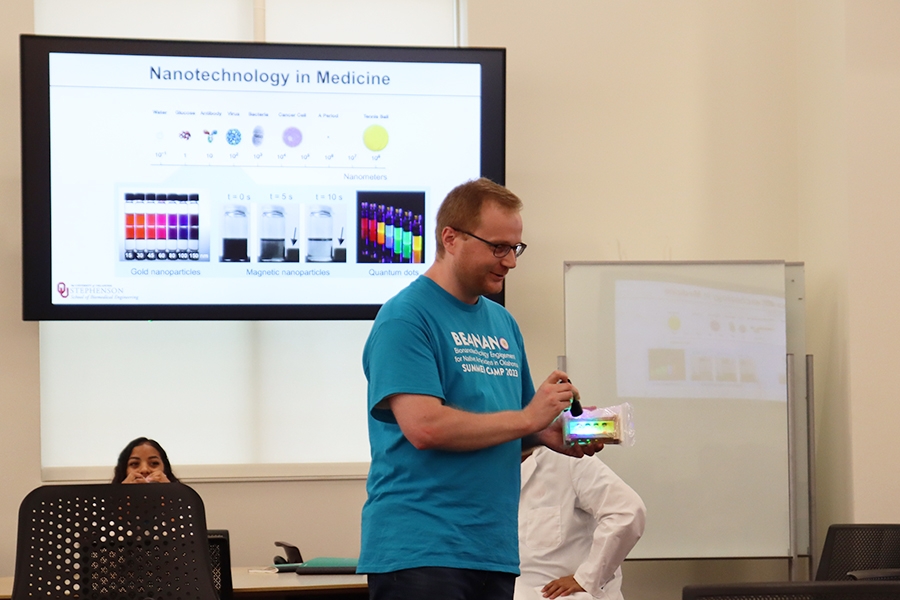Five high school students from rural southwestern Oklahoma school districts recently participated in the BE4NANO summer research camp led by Stefan Wilhelm, Ph.D., assistant professor in the Stephenson School of Biomedical Engineering, Gallogly College of Engineering, and a group of undergraduate research student counselors from the Wilhelm Lab. BE4NANO, Bionanotechnology Engagement for Native Americans in Oklahoma, is a program that strives to inspire successful careers as scientists and engineers in underserved and underrepresented student populations.
The BE4NANO program began in 2019 with a partnership with the Kiowa and Wichita Tribes and is supported by the NSF CAREER Award, “Understanding Nanoscale Interactions at Single-Particle and Single-Cell Levels,” of which Wilhelm is the principal investigator.
“Our BE4NANO program tries to engage students in bionanotechnology research via year-long activities, including classroom and campus visits and a summer research camp,” Wilhelm said. “Native American students are underrepresented in science, technology, engineering, and mathematics. Through participation in BE4NANO, we hope to encourage students to consider getting a college degree and pursuing STEM careers. There is an opportunity for our BE4NANO students to positively impact their communities by becoming the next generation of successful scientists and engineers.”


During the five-day camp, the students focused on several learning objectives. These included studying the synthesis and characterization of gold and lipid nanoparticles for use in biomedical applications and analytical characterization equipment, such as a UV-ViS spectrophotometer, transmission electron microscope, and an inductively-coupled plasma mass spectrometry.
“Our goal is to teach the students the basics of nanotechnology and to show them how this technology can be used in the biomedical field,” Wilhelm said. “An important example is the use of nanotechnology during the COVID-19 pandemic. Gold nanoparticles are used in some at-home over-the-counter COVID-19 diagnostic tests that can show if a person has an active COVID-19 infection. In addition, lipid nanoparticles are used in the COVID-19 vaccines from Pfizer/BioNtech and Moderna.”
The BE4NANO students also visited the OU Health Sciences Center to participate in a stop-the-bleed training workshop, explored skeletons and skull forensics at the Museum of Osteology, and took part in social activities such as a trip to HeyDay for pizza, bowling, and other games, as well as a movie night and a tour of the OU campus.
Learn more about the history of the BE4NANO program and its partnerships with the Caddo Kiowa Technology Center, the Kiowa and Wichita Tribes, and 14 partner high schools in rural southwestern Oklahoma.